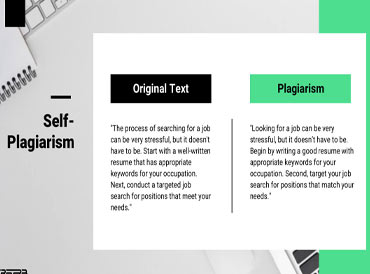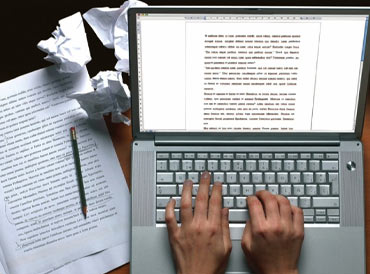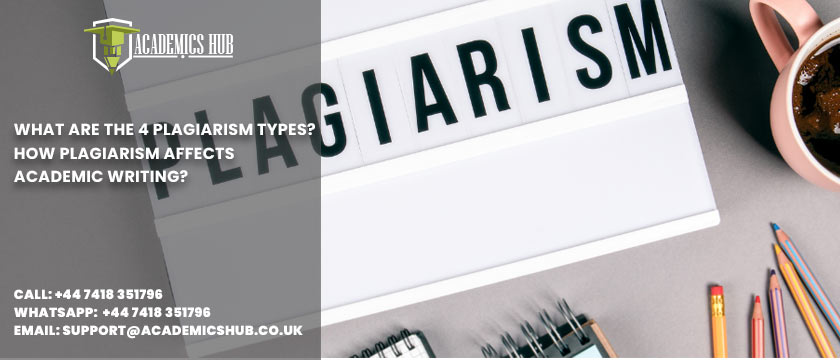Misrepresenting someone else’s work as your own, known commonly as plagiarism, is not a new problem in academia. It has always been there for centuries. However, it has gotten more attention as a result of technological advancements that have made it easier to detect plagiarism. There are numerous plagiarism types involved in writing, specifically academic writing. Although no level of plagiarism is acceptable, it can range from complete plagiarism to inadvertent plagiarism. The impact of plagiarism on writing is severe. This is why it becomes a necessity to remove plagiarism from a document, if there is any, to authenticate one’s work and not indulge in malpractices.
One important thing to note is that not all plagiarism types are the same. When determining whether anything is plagiarism, determining whether it was purposeful or unintentional is crucial. This is why understanding plagiarism is an important part of academic writing and education. It discusses the consequences of both intentional and inadvertent plagiarism types.
Students usually get engaged with lots of tasks and thus do not get much time to complete their assignments and projects. This is why they prefer taking writing services UK from the best professionals. But it is important to know and understand the plagiarism types before considering any writing services from the experts.
What Is Plagiarism?
Plagiarism is when you portray someone else’s written or published work or ideas as your own, with or without their consent or permission, and incorporate it into your work without giving them any credit. This definition encompasses all published and unpublished material, whether in text, print, or electronic form. Plagiarism can be either intentional or inadvertent. Whether intentional or unintentional, plagiarism is a disciplinary offense under the assessment regulations.
Plagiarism strikes when you take someone else’s words or ideas and pass them off as your own. It involves intellectual theft in its most basic form. Plagiarism types range from intentional cheating to unintentional copying from a source without credit. This is why you must acknowledge the source of any words or ideas you utilize.
The Four Plagiarism Types:
Plagiarism Types: Direct Plagiarism

Plagiarism is most usually defined as borrowing elements of another writer’s work without properly citing the source. Frequently, the person copying from the text makes no edits. Sometimes, plagiarists also modify portions of sentences or substitute their own words. It does, however, fall within the category of plagiarism. Direct plagiarism is the most serious of the various plagiarism types. Direct plagiarism occurs when a plagiarist copies and pastes exact content from someone else’s work without citing the source or removing quote marks.
The duplication or identical copying of a text is a serious violation. This plagiarized content comes within the category of intentionally plagiarized content. It’s immoral, and the plagiarist could face disciplinary action from the original creator. It’s similar to absolute plagiarism; however, it just refers to bits of another paper rather than the entire document. Plagiarism of this kind is considered dishonest and is treated by academic sanctions. Although it is less common, it is a major breach of academic regulations and ethics.
Plagiarism Types: Mosaic Plagiarism
The unintentional one in all the plagiarism types is referred to as mosaic plagiarism. It is also referred to as patchwork plagiarism, sometimes. In this plagiarism type, the plagiarist may mention the content’s original source. Moreover, the writer commits plagiarism if he or she fails to recognize the quoted passage or correctly place it within quotation marks. Plagiarism is a serious crime, whether intended or not, because it assures that writing remains the author’s property. To improve academic writing, it is necessary to consult certain sources. If a writer uses the internet as a source, he should be aware of what not to do in order to avoid plagiarism. The most crucial thing is to correctly credit the source of the work he has cited.
Mainly, this sort of plagiarism occurs when a writer copies phrases or even entire paragraphs from a source without using quotation marks or substitutes some of the content’s words without affecting the source’s original structure. Moreover, mosaic plagiarism occurs when someone unintentionally paraphrases another’s work without permission or proper citation. Plagiarists sometimes do patch-writing by paraphrasing particular parts of the text and then copying and pasting the text or parts of it. This is one of the most used and detected plagiarism types.
Plagiarism Types: Self-Plagiarism or Auto-Plagiarism

Self-plagiarism is one of the four plagiarism types in which a high school student copies and pastes parts of a previously submitted academic paper. So self-plagiarism basically occurs when a student submits the same paper for two different class projects without consulting the relevant teacher. Self-plagiarism does not always result in serious legal action, but it can have an impact on the presentation of academic papers and research articles.
When an author reuses major chunks of his or her previously published work without credit, it is referred to as auto-plagiarism. As a result, published researchers are more likely to be involved in plagiarism types than university students. The penalty of such an offense varies based on the duplicated content.
Plagiarism Types: Accidental Plagiarism
Plagiarism is never acceptable, and the consequences are generally the same, whether it is intentional or not. On the other hand, plagiarism can be inadvertent if it occurs due to negligence, error, or unintentional copying. Plagiarism happens when a plagiarist misquotes phrases or parts of a text obtained from a source, fails to properly cite the source, or incorrectly cites the source. Even if the name of the work is cited, the original author can seek disciplinary action against the plagiarist for mistaken authorship, even if unintentional plagiarism was not intended.
This type of plagiarism can also occur when someone else edits a paper and makes significant modifications. Even if the contributors are not recognized as authors, it is recommended that they be acknowledged at the time of publishing. The most effective way to avoid inadvertent plagiarism and even other plagiarism types is to accurately cite sources, which may be accomplished with the help of specialists.
The Impact of Plagiarism on Academic Writing

Plagiarism, even when accidental, amounts to theft and causes serious consequences for both the parties involved. It is therefore considered an unethical and illegal activity as it creates harm.
Plagiarism, when done intentionally, suggests that the individual responsible is not truthful about their work, which is an issue in any situation. It also harms the individual whose work you have plagiarized: It’s natural that you wouldn’t like your work stolen or used and passed off as someone else’s work, particularly in the publishing industry. Moreover, stealing words and ideas from others hinders the learning process because your own originality isn’t being tested, and you’re not learning. So this negatively impacts your academic writing skills.
All academic writing is based on other people’s ideas, and it’s critical that the reader can see where those ideas come from. Also, a document made up of a patchwork of numerous unacknowledged sources is usually a mess, regardless of the quality of the text you’re plagiarizing. Thus, it becomes important to rectify any error or plagiarism encountered in order to not indulge in any malpractices. Plagiarism hinders a person’s growth and limits his mental capabilities. Thus, to improve academically and individually, it is significant that one shows honesty and credibility in his work.
Plagiarism also hinders students’ creativity and impacts academic writing skills. Your creativity will suffer if you don’t push yourself to create original content and creative approaches. It’s difficult to exercise your creative writing skills when you’re merely replicating someone else’s work. The best writers push themselves to be more innovative in order to make their work stand out. Plagiarism keeps you from pushing yourself to make anything truly original. This is why you need to focus on original content rather than copying others’ work.
Final Thoughts
Regardless of level, students should avoid all of the plagiarism types outlined above if they want to get the best scores possible during their studies. These cautions should ideally be seen positively by students because they serve as a reminder of what practices to avoid while composing a successful response to the essay or report question in front of them.
Each of the plagiarism types mentioned above has become more common in modern academic institutions such as schools, universities, academies, and colleges as a result of the increased usage of online sources. This is because online sources have made it easier for students to get instant access to a higher amount of source literature.
As a result, the potential of a student misusing some of these methods to increase their chances of receiving higher grade classifications in the topic course they have chosen to study is greatly increased. Furthermore, all plagiarism types bear the same level of seriousness in terms of disciplinary action and sanctions for the student who is found guilty. The penalty should be grade-related for unintentional plagiarism, with exclusion reserved for cases where a student has been caught attempting to deceive their academic tutor by passing off someone else’s work as their own.
